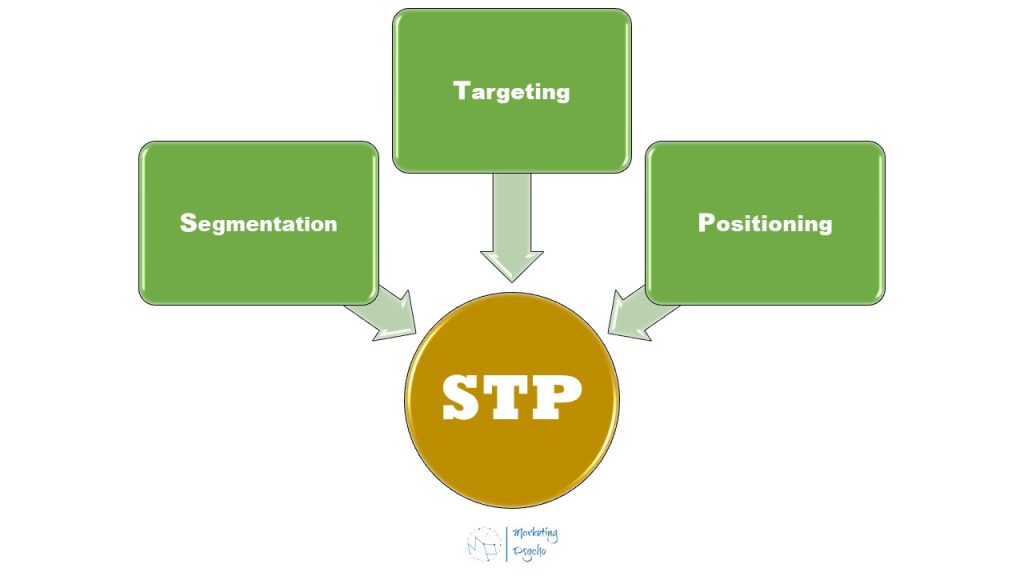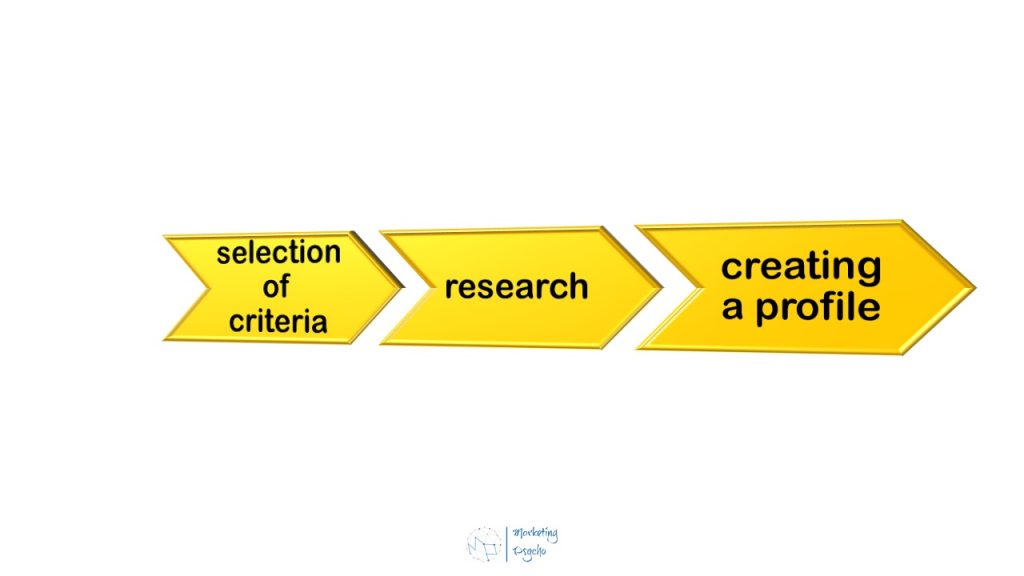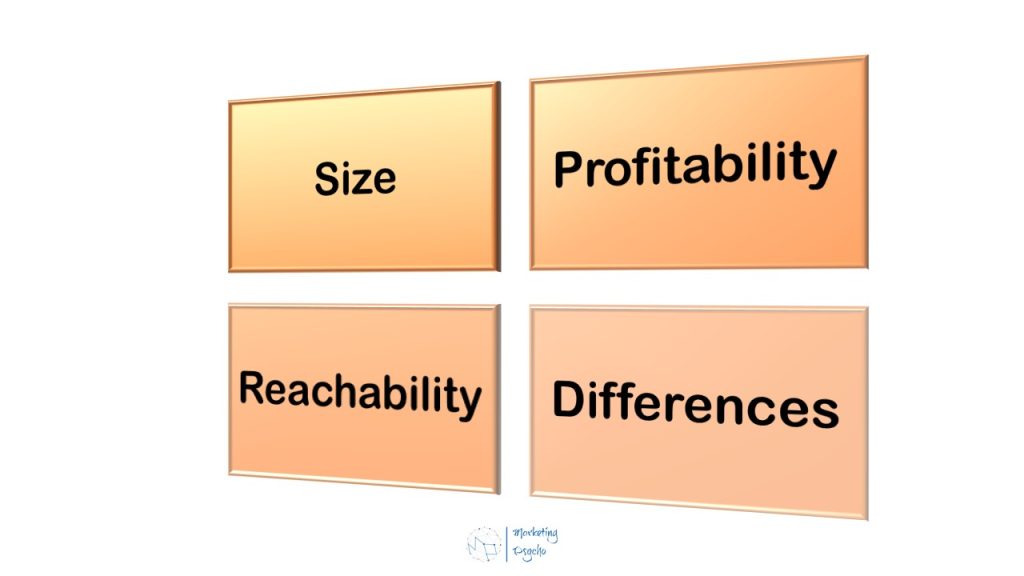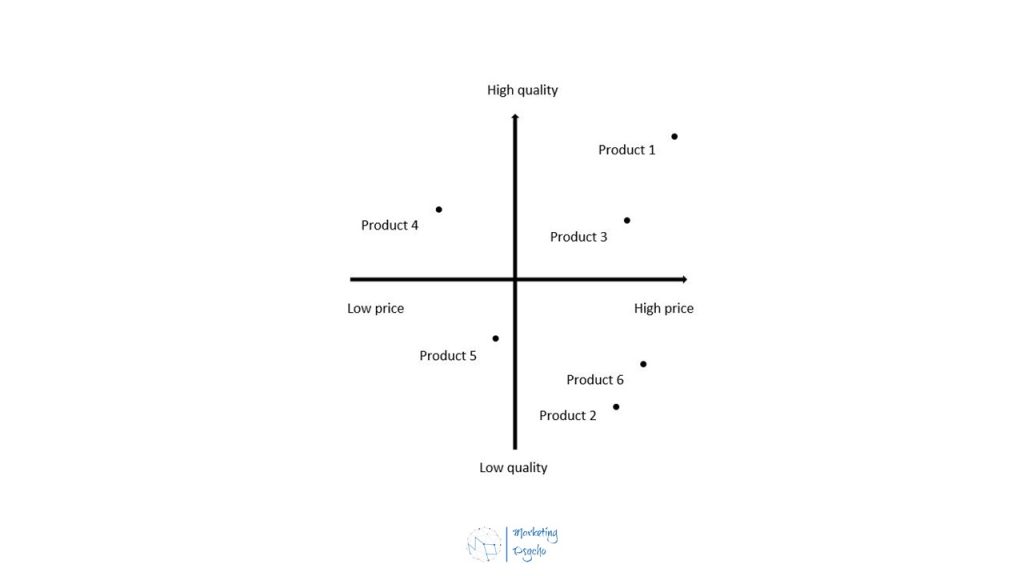STP Marketing (also STP process or STP model) is a concept in marketing that is based on the sequential application of three steps: Segmentation – Targeting – Positioning. The essence of the method is to identify market segments based on certain parameters, then select one or more of the most promising ones to work with and develop a personalized marketing approach for each of them. Mass marketing, which is based on the production and promotion of goods for all buyers without exception, in this case, gives way to targeted marketing, which is focused on the desires and needs of a certain audience.
Let’s look at each step in more detail.

Segmentation
Segmentation is a step that allows you to divide the market into different groups based on certain common characteristics. The purpose of segmentation in the STP marketing model is to identify and study consumer segments in the market you are interested in. Segmentation will help you further focus your marketing efforts on the most attractive group of consumers for business, as well as understand the behavior of your existing and potential customers. The segmentation process can be represented as the following sequence:

The most common criteria are:

Demographic or Sociodemographic
The division of the market into different groups according to such data as gender, age, life stage, physical characteristics, family size, family status, income, education, occupation, religious affiliation, ethnic group, socio-economic status, etc.
Geographic
The division of the market into different groups according to such data as geographical units, physical location, or even climate: states, regions, provinces, population density, residential address, postcode, etc.
Psychographic
The division of the market into different groups according to such data as lifestyle and personality traits: innovators, conservatives, sociable, introverted, etc. Psychography will help explain why the buyer makes a purchase.
Behavioral
The division of the market into different groups according to such data as user status, customer loyalty, purchase frequency, usage occasion, purchase readiness, benefit-sought, etc. These criteria show how consumers interact with your business: what they buy, how often they buy, and so on.
After you have decided on the parameters and divided the market according to them, then you create a segment profile. Profiles are detailed descriptions of a group of people with similar characteristics in each segment. This will allow you to evaluate the behavior of groups and understand why they make a purchase decision.
Targeting
Targeting is a step that allows you to select the most attractive segments for your business. The purpose of targeting in the STP model is to analyze segment profiles and choose the most suitable ones for your goals. You can work with one segment, or with several at once, or choose the tactics of sequential development of segments.
The main criteria for choosing a segment:

Size
Evaluate how big your segment is at the moment, as well as what potential it has for growth in the future. The segment must be large enough to justify marketing efforts for it. If the market is small, it can make it even smaller.
Profitability
Think about which of your segments has the greatest purchasing power. The expected profit should exceed the cost of attracting this group of consumers.
Reachability
Analyze how effectively you will be able to reach each segment with your marketing efforts. Consumers should be receptive to your marketing program.
Differences
Make sure that there are qualitative or quantitative differences between the segments. This will help to correctly identify the target group.
Your ideal segment is one that, firstly, has a large size and at the same time is actively growing, secondly, has high profitability and low costs, thirdly, you can reach it with marketing efforts and, finally, it must meet your business goals.
Positioning
Positioning is a step that allows you to consolidate your brand (product or service) in the minds of the target segment. The purpose of positioning in the STP marketing model is to create a personalized approach for the selected consumer segment in accordance with their preferences. This is the final step in the STP model. You have come a long way and now you have to draw the right conclusions.
The term Positioning was first used by Jack Trout in 1969 in the article “Positioning is a game people play in today’s me-too marketplace” in the magazine “Industrial Marketing”. Jack Trout and Al Ries wrote the book “Positioning: The Battle for Your Mind”, where they described their point of view on this tool. According to the concept of positioning, to attract the attention of consumers, marketers need to look for a solution, not inside the product, but in the mind of the person, you are addressing. The authors believe that the easiest way to get into people’s minds is to be the first.
To position products or brands, companies can emphasize the distinctive features of their brand, that is, determine their competitive advantage. Competitive advantages are the unique features of the company’s product that distinguish it from competitors and attract the target audience. Examples of competitive advantage can be price, technology, quality, terms and conditions of delivery, deadlines, order processing speed, innovation, personnel, guarantees, etc.
For proper positioning, the choice of competitive advantage should be based on the preferences of the target segment, it is necessary to meet the expectations of the audience. Analyze what needs the selected segment has and how your product will help meet them. This will become the basis for your USP. The unique selling proposition (USP), also called the unique selling point, or the unique value proposition (UVP) is your main marketing message to the audience about how your product is superior to competitors and how it can be useful in solving consumer problems.
In addition to meeting consumer expectations for successful positioning, you must also study your competitors and their product promotion strategy. You will be able to evaluate both successful techniques and fallible moves, this will help you choose the right way to develop your marketing efforts.
You can also use perceptual maps to understand what place different brands occupy in the minds of consumers and evaluate the competitiveness of your product.
Perceptual maps often consist of two axes X and Y, which correspond to two indicators, for example, let’s take the most common ones – price and quality. The result is 4 quadrants, at the ends of which there are opposite variables. Then a study is conducted among consumers and the place of each brand (by average value) on the map is determined. While perceptual maps with two dimensions are widespread, multi-dimensional maps are also used. The advantage of perceptual mapping is that it can identify free market niches that your company can take over.
An approximate perceptual map:

STP process is a convenient and effective strategic tool for promoting your brand or product. The end result – positioning based on personalization – will help you win over your audience and, accordingly, increase your profit.




